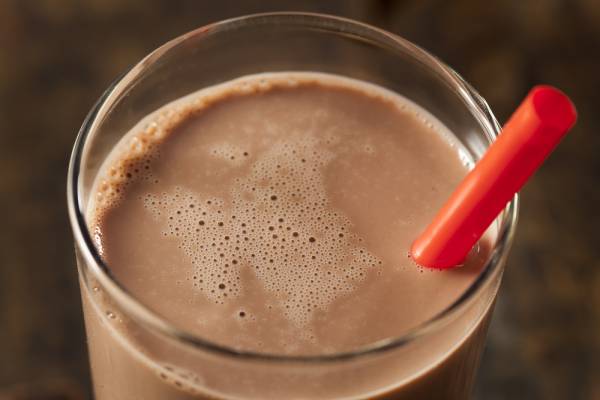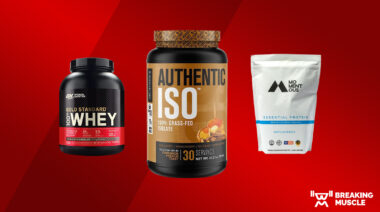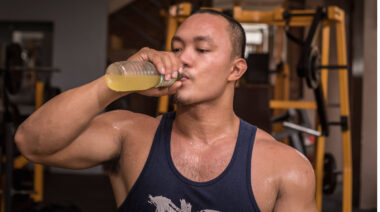Note: Charles is here on a weekly basis to help you cut through the B.S. and get to the bottom of the biggest questions in health and training.
Question #1: Calorie Intake on Rest Days
READER: Rest day calories – I don’t want to gain fat on rest days, but that’s when I’m supposed to be gaining muscle, so I want to eat, right? What’s the best approach?
CHARLES SAYS: I tend to think that distinguishing rest days versus training days in terms of caloric distribution might be a bit myopic. After all, your energy balance over the course of a week (and ultimately, over even longer timeframes) is what really matters.
It isn’t so much about what you eat on a day-to-day basis, but rather how your intake adds up over the long haul.
Sure, intuitively, it might seem you should eat less on days when your activity levels are lower, but it’s not that simple (it never is, right?). For example, if you train on Monday and rest on Tuesday, the muscles you trained on Monday are now undergoing repair on Tuesday, and that repair requires energy. And conversely, it might seem wise to eat more on training days, but in reality, the fuel for Monday’s workout was, in large part, ingested on Sunday.
So when it comes to nutrition (and training), always default to longer timeframes and broader perspectives whenever possible. Think of it like this: imagine how silly it would be if a friend said to you, “Hey did I tell you that my nutrition was absolutely perfect last Monday?” Obviously, the first thing you’d think would be, “Well, who cares how well you ate for a single day?”
Question #2: Do We Really Need to Track Numbers?
READER: How about the whole “quantified self” obsession? Can it help? Is it just a fad?
CHARLES SAYS: Okay, here’s an example of how honest I am – I had to Wiki this. Although I hadn’t heard of this specific term, I certainly had heard of “tracking” and “trackers,” maybe because I’m a tracker myself – in fact, I track things that I’d be embarrassed to tell you about.
I first learned the utility of quantification when I was studying sociology in college. In order to measure qualitative data such as opinions, we’d quantify them in a survey (“On a scale of one to ten, please describe how strongly you agree with the idea that women should be paid the same as men.”) Later in life, I started logging my workouts in a journal (my first real “tracking” activity, I suppose), and along the way, it occurred to me that all people tend to track things that are important to them. For example, if you write a check, you’ll probably make an entry in your checkbook register.
“[M]y only caution for those of us who like to track everything is to not lose track of those special things in life that are inherently immeasurable[.]”
Now, even though there’s truth in the saying, “what gets measured gets mastered,” there are in fact important things in life that cannot be easily measured. So my only caution for those of us who like to track everything is to not lose track of those special things in life that are inherently immeasurable – great art, moving music, inspiring stories, the smell of fresh air on a spring morning, and so on.
Question #3: Chocolate Milk as a Post-Workout
READER: Have you ever used chocolate milk as a post workout? Is it really as good as commercially made PWO drinks, or is that just marketing?
CHARLES SAYS: I haven’t, but I see no particular issue with it. Actually, Coca-Cola makes a higher-protein chocolate milk product called Fairlife that has 13g protein, 13g carb, and 4.5g fat. I don’t really see a substantial difference between this product and a typical protein shake that’s marketed for people who work out.

Charles gives the thumbs-up to using chocolate milk as a recovery drink.
This Week’s Training
I had a good solid week with good volume and a few noteworthy lifts (see below). I’m most happy with 5×5 with 225 on the bench press – something I haven’t done in at least twenty years. I’m also happy with my low bar squat, which seems to be coming along finally.
My current thinking about my training is as follows. Athletes who train for maximal strength have two necessary, yet conflicting demands they must attend to:
- They must train with high enough intensities to develop maximum strength.
- They must also train with sufficient volume to promote hypertrophy development, since muscle mass is an important foundation for strength expression.
The conflict is that you can’t accumulate enough volume for hypertrophy gains by using intensities sufficient for maximal strength development.
The solution, or at least one solution, is to alternate between phases where one type of training for one type of adaptation is trained, while the other adaptation is maintained using markedly reduced volumes of work.
So, my interpretation of this idea when I’m not close to a competition is to quickly and economically work up to a heavy set or two for 1-3 reps on each day’s core lift – to at least maintain or possibly even improve 1RM strength – and then train like a bodybuilder on two to four assistance lifts to promote additional hypertrophy. Then, as I get closer to a competition, I’ll reverse this process, spending more attention on the core lifts while reducing volume on assistance lifts to hopefully maintain any muscle mass that I had previously developed.
Hopefully that explanation makes sense, but if not, I welcome your questions. Post any questions you might have for me in this thread. See ya next week!
Significant Lifts:
Bench Press: 225 (5×5)
Squat: 315×2
Weekly Volume: 73,962 Pounds (Last Week: 72,769 Pounds)
Monday, May 4, 2015
Bodyweight: 200.4 Pounds
Volume: 18,695 Pounds
Average Weight Per Rep: 217.38 Pounds
Power Snatch
- Set 1: 45 lbs × 5
- Set 2: 45 lbs × 5
Notes: IQ: 45
Hang Snatch
- Set 1: 66 lbs × 3
- Set 2: 66 lbs × 3
- Set 3: 88 lbs × 3
- Set 4: 88 lbs × 3
- Set 5: 110 lbs × 2
- Set 6: 110 lbs × 2
- Set 7: 132 lbs × 1
- Set 8: 143 lbs × 1
- Set 9: 143 lbs × 1
- Set 10: 143 lbs × 1
Notes: IQ: 96.25
Squat
- Set 1: 45 lbs × 5
- Set 2: 45 lbs × 5
- Set 3: 135 lbs × 5
- Set 4: 135 lbs × 5
- Set 5: 225 lbs × 2
- Set 6: 275 lbs × 1
- Set 7: 295 lbs × 1
- Set 8: 315 lbs × 2
Notes: IQ: 132.69
High Bar Squat
- Set 1: 135 lbs × 5
- Set 2: 225 lbs × 5
- Set 3: 225 lbs × 5
- Set 4: 225 lbs × 5
Notes: IQ: 202.5
- Set 1: 225 lbs × 10
- Set 2: 225 lbs × 10
Notes: IQ: 225
45° Back Extension
- Set 1: 120 lbs × 12
- Set 2: 120 lbs × 12
- Set 3: 120 lbs × 12
Notes: IQ: 120
Tuesday, May 5, 2015
Bodyweight: 200 Pounds
Volume: 12,620 Pounds
Average Weight Per Rep: 123.72 Pounds
Bench Press
- Set 1: 45 lbs × 5
- Set 2: 95 lbs × 5
- Set 3: 135 lbs × 5
- Set 4: 185 lbs × 3
- Set 5: 205 lbs × 1
- Set 6: 225 lbs × 1
- Set 7: 245 lbs × 1
- Set 8: 255 lbs × 1
Notes: IQ: 121.81
Incline Dumbbell Press
- Set 1: 100 lbs × 8
- Set 2: 120 lbs × 8
- Set 3: 120 lbs × 8
- Set 4: 120 lbs × 8
Notes: IQ: 115
Seated Row
- Set 1: 150 lbs × 8
- Set 2: 150 lbs × 8
- Set 3: 150 lbs × 8
- Set 4: 150 lbs × 8
Notes: IQ: 150
Bicep Curl (Dumbbell)
- Set 1: 80 lbs × 8
- Set 2: 80 lbs × 8
Notes: IQ: 80
Thursday May 7, 2015
Bodyweight: 200.4 Pounds
Volume: 27,087 Pounds
Average Weight Per Rep: 220.21 Pounds
Clean and Jerk
- Set 1: 66 lbs × 3
- Set 2: 66 lbs × 3
- Set 3: 88 lbs × 2
- Set 4: 88 lbs × 2
- Set 5: 110 lbs × 2
- Set 6: 110 lbs × 2
- Set 7: 132 lbs × 2
- Set 8: 154 lbs × 1
- Set 9: 154 lbs × 1
- Set 10: 154 lbs × 1
- Set 11: 165 lbs × 1
- Set 12: 176 lbs × 1
Notes: IQ: 107.38
Deadlift
- Set 1: 135 lbs × 5
- Set 2: 135 lbs × 5
- Set 3: 135 lbs × 5
- Set 4: 225 lbs × 5
- Set 5: 315 lbs × 3
- Set 6: 405 lbs × 1
- Set 7: 405 lbs × 1
- Set 8: 405 lbs × 1
- Set 9: 435 lbs × 1
Notes: IQ: 212.77
Leg Press
- Set 1: 180 lbs × 10
- Set 2: 230 lbs × 10
- Set 3: 230 lbs × 10
- Set 4: 230 lbs × 10
Notes: IQ: 217.5
Safety Squat
- Set 1: 155 lbs × 5
Notes: IQ: 155
Back Extension
- Set 1: +120 lbs × 10
- Set 2: +120 lbs × 10
- Set 3: +120 lbs × 10 (Video Below)
Notes: IQ: 120
Friday, May 8, 2015
Bodyweight: 200.8 Pounds
Volume: 15,560 Pounds
Average Weight Per Rep: 152.54 Pounds
Bench Press
- Set 1: 45 lbs × 5
- Set 2: 45 lbs × 5
- Set 3: 95 lbs × 5
- Set 4: 135 lbs × 5
- Set 5: 135 lbs × 3
- Set 6: 190 lbs × 3
- Set 7: 205 lbs × 1
- Set 8: 215 lbs × 1
- Set 9: 225 lbs × 5
- Set 10: 225 lbs × 5
- Set 11: 225 lbs × 5
- Set 12: 225 lbs × 5
- Set 13: 225 lbs × 5
Notes: IQ: 162.64
- Set 1: 6 reps
- Set 2: 7 reps
- Set 3: 6 reps
- Set 4: 6 reps
Notes: IQ: 200.8
Bicep Curl (Dumbbell)
- Set 1: 80 lbs × 8
- Set 2: 80 lbs × 8
- Set 3: 80 lbs × 8
Notes: IQ: 80
Check out these related articles:
- Last Week’s Smart Strength Mailbag
- 10 Things I Know About Protein That You Don’t
- Not Getting the Results You Want? Time for a Reality Check
- What’s New On Breaking Muscle Today
Photos courtesy of Shutterstock.






